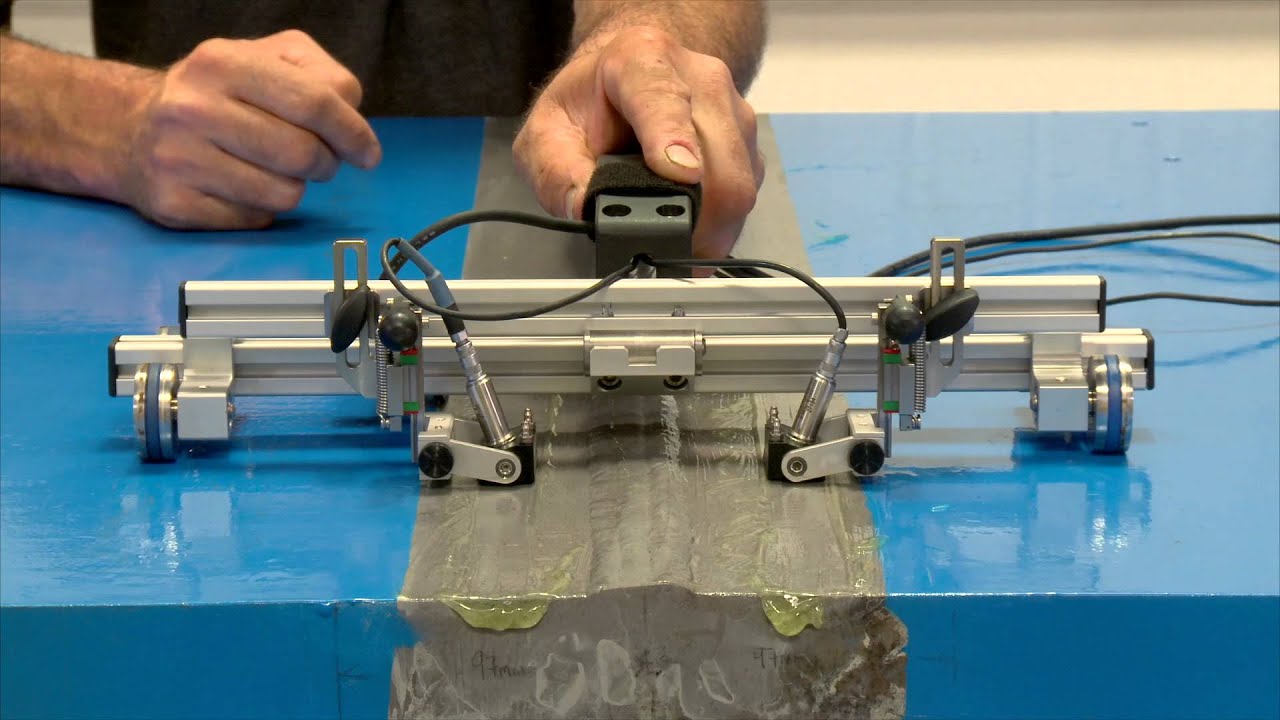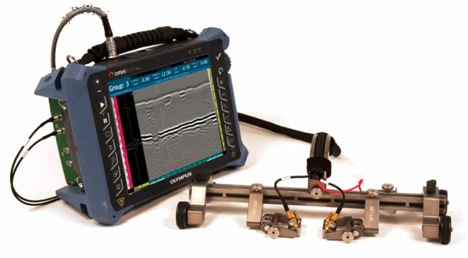Time of Flight Diffraction ( TOFD ) Ultrasonic Testing

In Time of flight diffraction (ToFD) systems, a pair of ultrasonic probes are used, sitting on opposite sides of a weld-joint or area of interest. A transmitter probe emits an ultrasonic pulse which is picked up by the receiver probe on the opposite side.
In an undamaged part, the signals picked up by the receiver probe are from two waves: one that travels along the surface (lateral wave) and one that reflects off the far wall (back-wall reflection). When a discontinuity such as a crack is present, there is a diffraction of the ultrasonic sound wave from the top and bottom tips of the crack. Using the measured time of flight of the pulse, the depth of the crack tips can be calculated automatically by trigonometry application.
Advantage
ToFD offers great accuracy for measuring the critical through-wall size of crack-like-defects. The accuracy of greater than ±1mm can be obtained in a wide range of material thickness from which pressurised components are constructed.
There have been many developments and refinements to the fundamental ultrasonic technique to cater for improved performance and/or results.
For example, AUT refers to Automated Ultrasonic Testing. Although this is a generic term which relates to the computerised collection of ultrasonic data, the three letter acronym AUT is now used to refer specifically to the automated ultrasonic inspection of pipe girth welds. Such systems have two sets of ultrasonic probes scanned circumferentially on either side of the weld. The sets of probes are selected to provide coverage of specific zones of the weld and the fusion face.
Time-of-Flight Diffraction – TOFD – is an ultrasonic technique which measures the time of flight of a pulse as it travels from a transmitting probe to a receiving probe. Divergent beams are used and it is necessary to scan the TOFD probe pair over the flaw for the technique to function correctly.
What distinguishes the technique from a standard pitch-catch configuration is the D which stands for diffraction. The technique relies on the detection of the diffracted sound wave which is generated from both the top and bottom edges of a planar defect.
The time of arrival of the diffracted signals from the flaw tips is measured with respect to the probe firing time. Time measurement can be done to great accuracy. The combination of this accuracy and the fact that the scattering source is the flaw tip forms the basis of a highly accurate sizing technique.
Phased array is the name given to a special type of ultrasonic probe.

An array is a group of transmitters, receivers or transmitter/receivers, generally called array elements. When used as a transmitter, firing the elements at different times can lead to interference between the sound waves produced by each individual element. This interference can be both constructive (waves add together) and destructive (waves cancel).
It is this interference which gives the array probe its main advantage – the ability to change beam shape and angle depending upon the timing at which elements are fired. When an array is used as a receiver, the difference between the times at which a pulse arrives at each array element contains information about the location of the pulse source.
